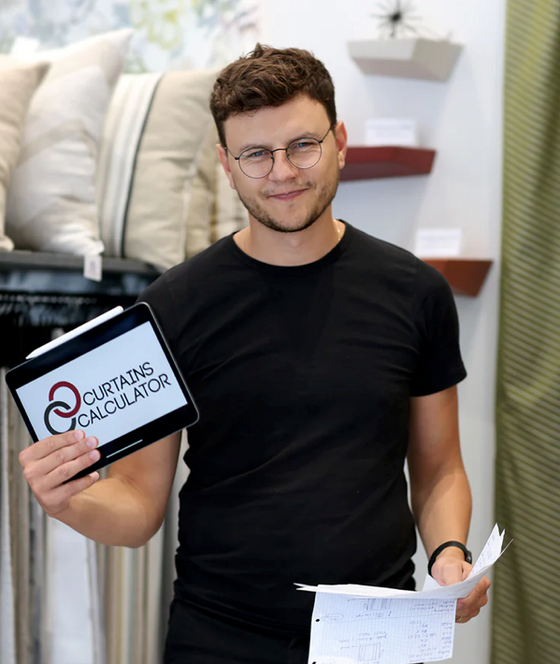InterioApp’s Online Store Experiment Week 1: Preparation

Week 1. Preparation
If you’re already part of the window covering industry but haven’t ventured into the online market yet, this is the perfect resource to help you take that step. Understanding the importance of establishing your online presence and selling bespoke products is key, and with the right tools, you can confidently launch your online store and grow your business.
"At the same time, I’m recording a video for our YouTube channel to make the steps even clearer for DIY enthusiasts. It may take some time, and I apologise for any delays in publishing new videos. However, if you’re serious about starting your online business, I can offer a personalised 1-on-1 meeting. Leave me a message by clicking here, and I’ll share a link to my personal calendar. Together, we’ll go through all the necessary steps to create a strategy and roadmap for your online business. I’ll be your personal assistant, ensuring you stay updated. With my guidance, we’ll launch your business successfully!"
Darius B.
CEO and Founder of InterioApp
The online market for window coverings is growing fast and will continue to expand into 2025 and beyond. In this article, part of InterioApp’s real business experiment, we’ll not only guide you through the steps to launch your business but also perform each step ourselves. We’ll show and explain every action we take through our blog posts and YouTube channel. This will help you not only replicate our steps but also see how quickly we start collecting our first sales and enquiries from real customers buying curtains and blinds using our ecommerce calculators.
About InterioApp
Just a bit about us—InterioApp is a software developer specialising in solutions for curtain and blind retailers. Our main tool, InterioApp, helps retailers generate quotations and manage projects from measurements and fabric selections to closing deals and managing work orders.
Our eCommerce calculators allow to sell window coverings instead of pre-made curtains/drapes and window blinds.
With our software apps, retailers can create their online store, eliminate extra maintenance costs and the need for a developers to support their online business. The money can be used for online marketing, or offering a better deals for first clients.
We developed our calculators for Shopify store owners. Within 3–6 months during our support time, our clients are fully trained to create content, update pricing, upload new products, and manage the online store to make £10k per month in online sales all by themselves.
When the business becomes profitable, we advise onboarding an online store manager, allowing you as a business owner to focus on business strategy and business growth, and not on daily operations.
How Are You Spending Your Time Online?
How often do you find yourself browsing on your mobile, desktop, or tablet? What are you searching for? How many ads have actually caught your attention over the last few weeks? If you’ve never considered this, start noting it, and you’ll realise that the online market is where you spend most of your time.
There’s an old saying: “If you walk past the barber shop enough times, eventually you’ll step in.” The same applies to online shopping. Now, think about this: How many hours have you spent in a retail store recently? Not grocery stores or food shops, but interior or other specialty stores? Chances are, you haven’t been to many—if any—in the past few weeks.
Online stores now generate a significant percentage of revenue in many markets—up to 20% or more in retail sectors (depending on the industry)—and this share is only growing. So why isn’t your online store performing as well as it should?
✏️Note: Remember, a sleek landing page accounts for only 20% of the online store. User experience, organisation of sections and pages, product descriptions clarity, and reliable delivery, support, and payment processes are crucial. |
Moving Forward
Success in the online market requires a mindset shift. Understand that your online store deserves the same level of effort and investment as your local store—if not more. By focusing on learning, adapting, and implementing proven strategies, you can transform your online presence into a powerhouse that generates more revenue in a month than your local store does in a year.
The key is to start now. Learn, adapt, and take action. We’ll guide you through the steps to ensure your online business thrives. Stay with us, and together, we’ll turn challenges into opportunities.
Introducing Our Experiment
At InterioApp, we’re running a hands-on experiment to show you every step you need to take to launch and grow your online store successfully. We’ll document each action we take, so you can follow along, replicate our strategy, or adapt it to achieve even better results for your business.
Steps We Will Take and Why
As part of our experiment, we’ll build an online store on Shopify from scratch! We’ll choose a simple, memorable company name, use products from our software users (vendors), and list them for sale on the store.
The goal is to show you how to start generating leads and sales with minimal marketing investment. You’ll learn which platforms are essential for attracting new customers and the level of effort required to succeed in the online market.
Our Step-by-Step Plan
1. Domain Name
First, we’ll buy a domain name for our online store. We’ll explain every single step we take so you can better understand why we did these steps. for this we are going to use goDaddy.
2. Google Account
A Google account is crucial, even if you haven't a local physical store. We’ll start by setting up a Google My Business account. Don’t forget to get a physical NFC card to collect reviews while you’re with your clients. The main things you need to start collecting from the beggingin are the testimonials, reviews, and sales. We’ll discuss this in detail later on.
3. Social Media
For this experiment, we won’t create dedicated social media profiles for our online business. While it’s a valuable step for any other business, it requires significant time and investment to make it work effectively. However, if you plan to run paid ads or build long-term relationships with your audience, we strongly recommend creating social media accounts for your business.
Instead, for our experiment, we’ll focus on signing up for platforms like Houzz and similar niche directories to promote our business, reach a wider audience, and spread our message effectively.
Think of social media platforms as bubbles. For example, if you create a Facebook account, don’t just post on your page. Start by engaging in relevant groups where people discuss problems or products related to what you’re selling. Answer questions, share valuable insights, and then gently redirect people to your products or services.
One critical step is to engage with other content—comment on blog posts, ask and answer questions, and participate in discussions. Avoid overtly promoting your products and services. Instead, focus on addressing your clients’ problems. Share your experiences in finding solutions to similar challenges, and offer helpful resources or a link for them to explore more.
4. Shopify Account
We’ll purchase a yearly Shopify store account to create our online store. You can do this month by month, but since we know the project will last at least a year, we can save some money. Our ultimate goal is to have a profitable and successful online store, so every number counts.
5. Essential Apps to Install
We’ll go through the list of must-have apps that make the store effective.
6. Design of the Store
We’ll outsource the design. This is your store’s frontend and is the most important part of the online store so far.
7. Market Research
We’ll conduct market research on our primary and secondary markets where we’ll run the business.
8. ICP and Content Marketing
We’ll work on our Ideal Customer Persona (ICP) and create a content marketing strategy to fit our ICP. We’ll research keywords and find the shortest way to reach our target customers. ICP, SEO, and UI/UX are the most important parts in creating a successful and profitable online business. If you have these three parts working together, the rest is customer support, upselling, and quality assurance to ensure you’re not only attracting new clients but also keeping current clients satisfied and recommending your business to others.
9. Marketing Strategy and Budgets
This part is my favorite. We’ll create a marketing strategy, and you’ll see how fun it is to manage KPIs and how predictable the online business is. In other words, it’s just mathematics and numbers. You’ll love seeing how your sales are growing, how £1 invested is generating £1.5, and how to make more while saving on some expenses.
10. Organic Growth in the First 6 to 12 Months
We’ll focus first on organic growth and only then move to paid advertisements and marketing campaigns. Initially, we want to prepare the online store’s SEO to be visible and competitive on Google. Only then will we start different paid campaigns.
Why We Are Doing This
This experiment is designed to break down the barriers holding many businesses back from succeeding online. Fear of the unknown often stops people from taking the first step. But here’s the truth: every successful online business started with a leap into uncertainty.
Through this journey, we aim to show you that the online market isn’t as intimidating as it seems—and that with the right strategies, it can be far more profitable and exciting than you imagined. Our goal is to empower you with practical steps and the confidence to start building your online success.
Understanding Investments and Returns
Let’s face it: things that are easy to start often become harder to manage. Conversely, things that require effort and investment upfront tend to pay off in the long run.
Think about the costs of opening a physical store—rent, samples, goods, and employee salaries. It’s a significant investment, often requiring at least £65k to get started. Many assume that starting an online business requires no investment—just a domain name, some basic setup, and a few social media posts. But in reality, running a successful online store demands the same level of commitment and strategic investment.
The difference? Returns. Online stores offer scalability and reach that physical stores simply can’t match. With the right approach, your online store can generate more revenue in a month than a physical store might in a year. The opportunities are endless if you’re willing to learn, adapt, and commit.
Join Us on This Journey
We’re taking this journey to demonstrate exactly how to turn an online store into a thriving business. You’ll learn:
• How an online store differs from a physical store.
• What it really takes to start generating your first sales.
• How long it could take to achieve £10k in monthly revenue.
Next Steps
When we developed a Curtain and Blind Calculator, we made e-commerce accessible to thousands of retailers in the window covering industry. This calculator allows retailers to start selling curtains and blinds online without the high upfront costs of a custom online store (£100k) or monthly maintenance costs (£5–10k). With our Curtain and Blind software, you can enter the market and begin collecting your first orders for less than £90 per month. Take advantage of this opportunity and start your online business today!
In the coming week, we’ll share insider tips, strategies, and detailed guides on creating an online business from scratch and selling wave curtains online using our calculators. Our upcoming weekly posts will provide valuable insights to help you expand your offerings and grow your business. Don’t miss out on this chance to make your business thrive!
Click the link to read a post from "Onlin Business Experiment week 2".
Stay Connected & Learn More
Follow us on social media to get the latest updates, tips, and inspiration for your online curtains and blinds business. Explore our software and Shopify app to take your business to the next level!












Leave a comment